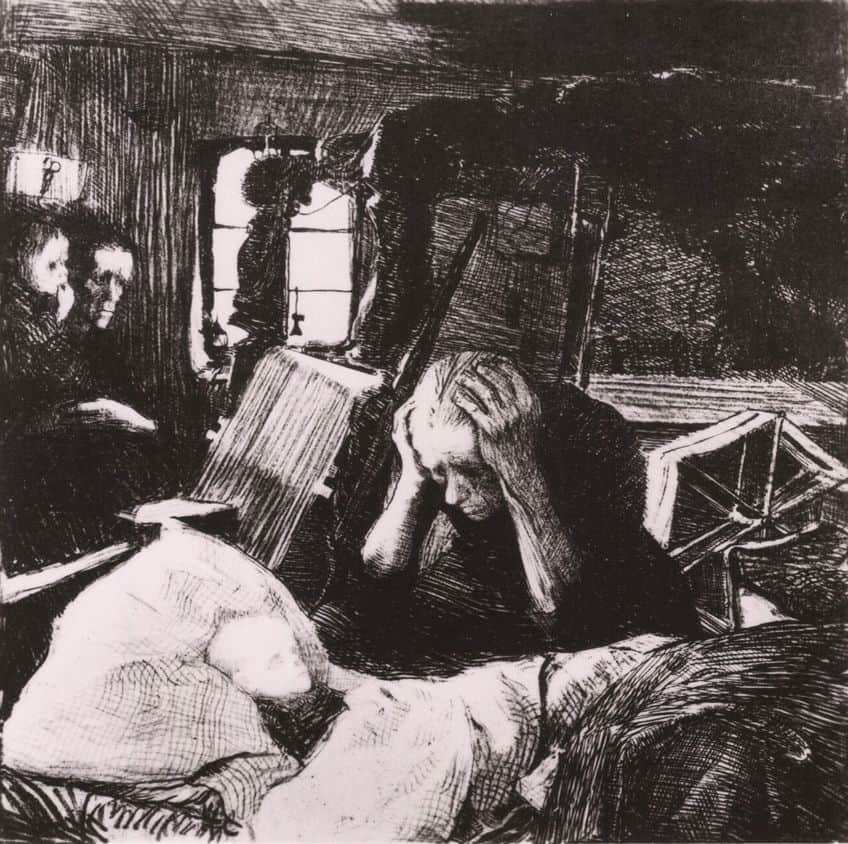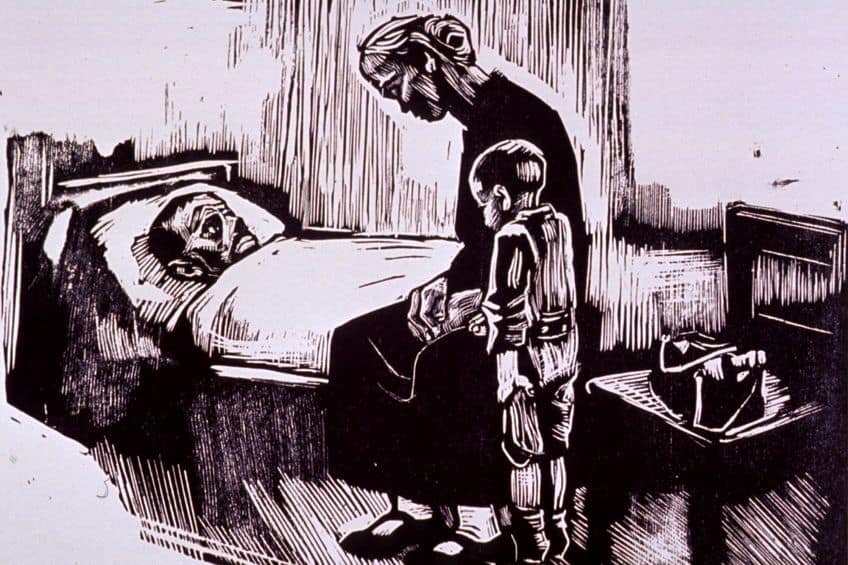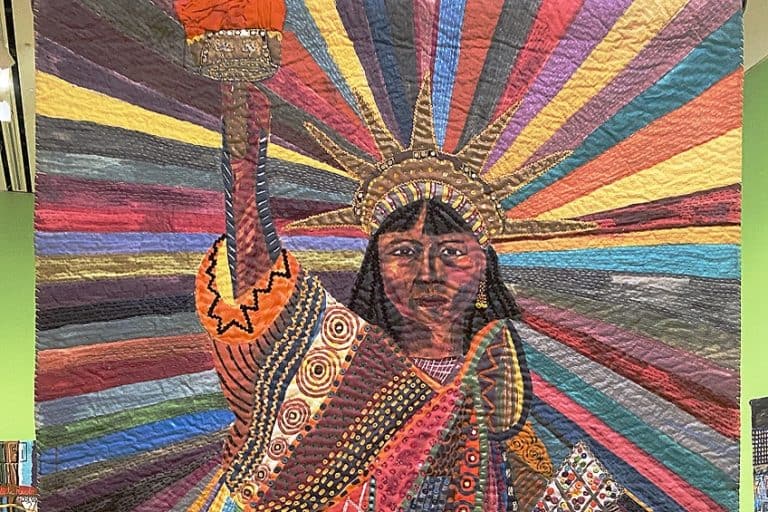Käthe Kollwitz – Portraying Social Injustice and Human Suffering
Käthe Kollwitz, a pioneering German artist of the late 19th and early 20th centuries, left an indelible mark on the art world with her poignant and socially charged works. Renowned for her mastery of printmaking, drawing, and sculpture, Kollwitz’s art passionately delved into themes of poverty, war, and the human condition. Her empathetic portrayal of the struggles faced by ordinary people, particularly women and the working class, continues to resonate with audiences globally. In this article, we delve into the life, works, and enduring legacy of Käthe Kollwitz, exploring the depth of her artistic vision and the profound impact of her contributions to the art world.
Key Takeaways
- Käthe Kollwitz was a German artist known for her portrayals of social injustice and human suffering.
- Her work encompasses painting, printmaking, and sculpture and speaks to themes of war, poverty, and hunger.
- Kollwitz’s legacy extends beyond her art, reflecting her engagement with social issues and her influence in Expressionism.
Life and Education
| Birth | July 8, 1867 |
| Death | April 22, 1945 |
| Place of Birth | Königsberg, Prussia |
| Genre of Work | Expressionism and printmaking |
Käthe Kollwitz was a German artist whose profound empathy for human suffering defined her oeuvre. Born Käthe Schmidt on July 8, 1867, she became a pivotal figure in art, embracing painting, printmaking, and sculpture throughout her life. She is renowned for her unflinching portrayal of the human condition, particularly the sorrows borne by the working class.

Kollwitz’s innovative approach to art was intertwined with her social and political conscience. Through her evocative cycles, such as The Weavers and The Peasant War, she communicated powerful messages about poverty, hunger, and the ravages of war. As the first woman to be elected to the Prussian Academy of Arts, she also became an influential voice within Expressionism. In the historical context of Germany’s societal changes, Käthe Kollwitz’s upbringing and education played a crucial role in shaping her future as a distinguished artist.
Her journey towards becoming an influential figure in the art world began in her childhood, and was marked by rigorous artistic training.
Early Life and Family
Born on July 8, 1867, in Königsberg, which is now known as Kaliningrad, Käthe Schmidt was the fifth child of Carl Schmidt and Katharina Schmidt. Her family was of middle-class standing, fostering an environment that was both culturally stimulating and supportive of her talents from a young age. Her father, recognizing her artistic abilities, ensured that she received an education that nurtured her burgeoning skills.

Artistic Training and Influences
Kollwitz’s formal artistic training commenced in Berlin in 1881, where she studied painting under Karl Stauffer-Bern. Later, she further honed her craft in Munich under Ludwig Herterich, a respected artist of that era. Key milestones in Kollwitz’s education and early influences included:
- 1881 – 1885: Studied in Berlin.
- 1885 – 1889: Continued her education in Munich.
- Berlin versus Munich: A juxtaposition of different artistic scenes that influenced her work and style.
Her marriage to Karl Kollwitz, a doctor, brought her into close contact with the working class, whose struggles would deeply influence her artistic themes.
Throughout her education and early experiences, Kollwitz developed a distinct style that was unafraid to confront social issues and the human condition.
Artistic Career and Works
Käthe Kollwitz’s artistic career spanned over five decades, during which she produced a profound body of work that includes prints, drawings, and sculptures. Her art reflects a deep commitment to social themes and a mastery of various techniques.

Early Works and Influences
Kollwitz received her initial education in painting and drawing in Berlin and Munich. However, printmaking, particularly the techniques of etching and lithography, soon became central to her artistic expression. In her early works, the realism movement and its novel approach to representing everyday life had a significant impact on her.
She drew inspiration from novels like Germinal by Émile Zola, which echoed in her later works that depict laborers’ struggles.
Printmaking and Techniques
The artist’s adoption of printmaking, including etching, lithography, and woodcuts, allowed her to convey powerful messages through stark contrasts and bold lines. Kollwitz was also adept in woodcut techniques, which she used to great effect in her socially engaged series. Her proficiency enabled her to explore the full range of graphic work, from intricate drawings to compelling prints.

Major Themes in Art
Throughout her career, Kollwitz was concerned with themes of social injustice and human suffering. She depicted the realities of war, poverty, and oppression, grounding her art in Expressionism. Works like The Weavers and The Peasant War series unflinchingly portray the lives and hardships of the working class.
Her focus on these themes is a consistent thread through her body of work.
Notable Works and Exhibitions
Some of Kollwitz’s most significant contributions include powerful cycles such as The Weavers and The Peasant War, which illustrate the plight of workers. Her sculptural works and memorial sheet for Karl Liebknecht are landmarks in the artist’s oeuvre. Not only did her work resonate in exhibitions during her lifetime, but it continues to be displayed and appreciated posthumously in museums, such as the Käthe Kollwitz Museum in Berlin.

Social and Political Engagement
Käthe Kollwitz’s work as a German artist was deeply immersed in the social realities and political dynamics of her time, reflecting a strong commitment to social justice and pacifism. Kollwitz’s art is characterized by its direct portrayal of social issues affecting the vulnerable: the working class, the peasants, and victims of hunger and poverty. Her experiences living in a working-class neighborhood in Berlin profoundly influenced her work. She depicted the harsh realities of those around her with raw emotional power, often focusing on the impact of war and adversity on civilian life.
The Peasants’ War, which portrayed the oppression of peasants in feudal times, reflects the universality of struggle in human history.
Political Stance and Impact
Kollwitz was not only an artist but also a pacifist and social democrat supporter. Her political stance was clear in her advocacy for social justice and her opposition to the First World War. Even though the Soviet Union awarded her the Order of the Red Banner of Labour, she was not aligned with any party, rather driven by a humanitarian perspective. Her letters and personal writings reveal her despair over war and her commitment to advocating for peace. Through her art, Kollwitz became an eloquent voice against the suffering caused by war and social injustice, making a lasting impact that transcended geographic and temporal boundaries.

Legacy and Influence
Käthe Kollwitz’s contribution to art is marked by her poignant advocacy for social issues and the enduring resonance of her works. Her legacy is a testament to her skillful blend of artistic prowess and social commentary. Kollwitz was acclaimed during her lifetime, receiving numerous awards which underscored her impact in the realm of art and society. In 1919, she became the first woman elected to the Prussian Academy of Arts. Later, she was awarded the Pour le Mérite for Science and Art in 1929, underscoring her significance in German culture.
Notably, Käthe Kollwitz was nominated by colleague Gerhart Hauptmann, an esteemed figure in literature.
Impact on Future Generations
The themes of Kollwitz’s work transcended her own era, influencing succeeding generations of artists and activists. Her ability to evoke empathy through art made her work a touchstone for those seeking to address social injustice. Max Klinger, a significant influence on Kollwitz, would likely have appreciated how she extended the expressive potential of graphic arts into the social sphere.

Kollwitz’s Art Today
Kollwitz’s art endures in relevance and continues to be exhibited worldwide. Despite challenges, such as her art being defamed by the National Socialists for its empathetic portrayal of the working class and those who suffered under brutal realities, her legacy persists. Institutes like the Berlin Academy for Women Artists reflect the path Kollwitz carved for future generations. Her biography remains a subject of study and admiration, underlining the unfading interest in her life and works.
Käthe Kollwitz’s artistic legacy is a testament to the power of art as a tool for social commentary and change. Through her compassionate and evocative works, she shed light on the struggles and injustices faced by the marginalized, creating a lasting impact on the art world and beyond. Kollwitz’s ability to capture the raw emotions of her subjects, coupled with her technical brilliance, has solidified her position as one of the most influential artists of her time. As we reflect on her life and artistry, Kollwitz’s dedication to depicting the human experience with honesty and empathy serves as a timeless inspiration for artists and activists alike, reminding us of the enduring relevance and importance of art in addressing social issues and fostering empathy in society.
Frequently Asked Questions
What Are the Defining Characteristics of Käthe Kollwitz’s Art Style?
Käthe Kollwitz’s art is marked by its emotive intensity and social commentary. Notable for its realism and accessibility, her work often reflects themes of suffering, poverty, and the struggles of the working class. She utilized printmaking techniques, such as etching, lithography, and woodcuts, to disseminate her powerful messages widely.
How Did Käthe Kollwitz’s Personal Experiences Influence Her Artwork?
Kollwitz’s artwork was deeply affected by her personal life, especially the deaths of those close to her, including her son Peter in World War I. These tragedies fueled her commitment to portraying themes of loss, mourning, and the human cost of war, making her works profound expressions of grief and empathy.
What Is the Significance of Käthe Kollwitz’s Legacy in the Context of Modern Art?
Käthe Kollwitz’s legacy in modern art centers on her unwavering commitment to social advocacy through her art. Her depictions of human suffering and injustice remain influential for their emotional potency and social critique, inspiring contemporary artists to address pressing social and political issues.
Isabella studied at the University of Cape Town in South Africa and graduated with a Bachelor of Arts majoring in English Literature & Language and Psychology. Throughout her undergraduate years, she took Art History as an additional subject and absolutely loved it. Building on from her art history knowledge that began in high school, art has always been a particular area of fascination for her. From learning about artworks previously unknown to her, or sharpening her existing understanding of specific works, the ability to continue learning within this interesting sphere excites her greatly.
Her focal points of interest in art history encompass profiling specific artists and art movements, as it is these areas where she is able to really dig deep into the rich narrative of the art world. Additionally, she particularly enjoys exploring the different artistic styles of the 20th century, as well as the important impact that female artists have had on the development of art history.
Learn more about Isabella Meyer and the Art in Context Team.
Cite this Article
Isabella, Meyer, “Käthe Kollwitz – Portraying Social Injustice and Human Suffering.” Art in Context. April 16, 2024. URL: https://artincontext.org/kathe-kollwitz/
Meyer, I. (2024, 16 April). Käthe Kollwitz – Portraying Social Injustice and Human Suffering. Art in Context. https://artincontext.org/kathe-kollwitz/
Meyer, Isabella. “Käthe Kollwitz – Portraying Social Injustice and Human Suffering.” Art in Context, April 16, 2024. https://artincontext.org/kathe-kollwitz/.











